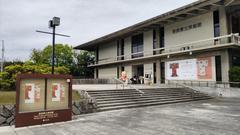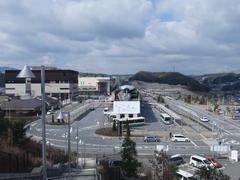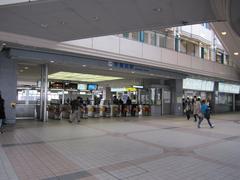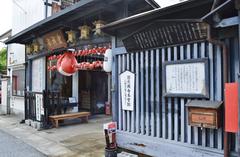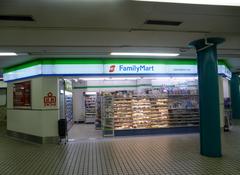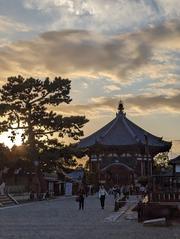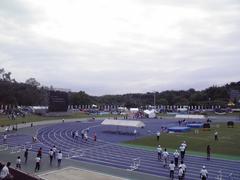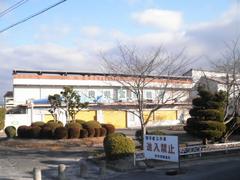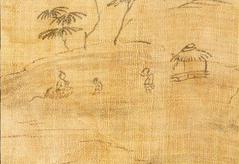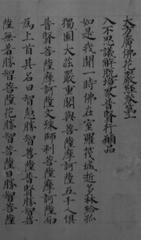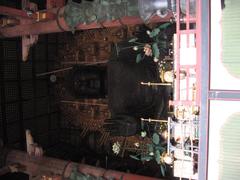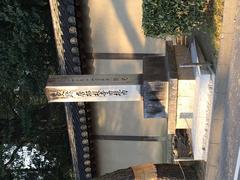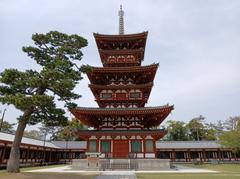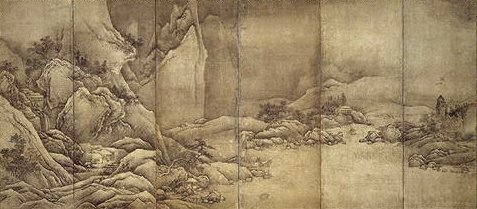
Nara Prefectural Museum of Art Visiting Hours Tickets and Guide to Nara Historical Sites
Date: 15/06/2025
Introduction to the Nara Prefectural Museum of Art and what visitors can expect
Nestled in the historic city of Nara, Japan’s ancient capital renowned for its UNESCO World Heritage Sites and cultural treasures, the Nara Prefectural Museum of Art stands as a distinguished institution dedicated to preserving and celebrating Japanese artistic heritage. Founded in 1973 through the generous donation of Yoshikawa Kanpō — a celebrated Japanese-style painter and scholar — the museum has grown into a vital cultural hub showcasing over 4,200 works that span from traditional Nihonga paintings and ukiyo-e woodblock prints to avant-garde contemporary art movements like Gutai. Its collection uniquely highlights artists connected to the Nara region, offering visitors an immersive experience that bridges historical artistry with modern expressions. Visitors can explore rotating exhibitions, attend special events, and enjoy the museum’s carefully designed modernist architecture by Mitsuo Katayama, which harmoniously integrates with the surrounding historic landscape including landmarks such as Nara Park, Tōdai-ji Temple, and Kōfuku-ji Temple. Whether you are an art enthusiast, history buff, or cultural traveler, this comprehensive guide provides essential information on visiting hours, ticketing, accessibility, and nearby attractions to help you plan an enriching visit to the Nara Prefectural Museum of Art. For the latest updates and detailed planning tips, consult the official museum website and trusted travel resources. (Nara Prefectural Museum of Art official website, Art Tourism Japan, Nara City Guide)
Table of Contents including history culture visitor information travel tips and nearby attractions
- Introduction
- Historical Background
- Founding and Development
- Key Figures and Collections
- Architectural Significance
- Design and Construction
- Architectural Features
- Integration with Nara’s Cultural Landscape
- Collection Overview
- Key Collection Areas
- Notable Donated Collections
- Collection Display and Rotation
- Special Exhibitions
- Thematic and Collaborative Shows
- Current Exhibition (June 2025)
- Visiting Information for the Nara Prefectural Museum of Art
- Opening Hours
- Admission Fees
- Accessibility and Facilities
- Getting There
- Guided Tours and Special Events
- Photography
- Nearby Attractions and Recommended Itinerary
- Visitor Flow and Best Times to Visit
- Accessibility
- Language Support and Visitor Services
- Photography and Conduct
- Practical Tips for a Smooth Visit
- Safety and Cleanliness
- Sustainability and Local Engagement
- Frequently Asked Questions (FAQ)
- Conclusion
Discover the Nara Prefectural Museum of Art: A Blend of History, Architecture, and Culture
Nestled in the heart of Nara City, the Nara Prefectural Museum of Art offers visitors a unique journey through Japanese artistic heritage, combining a rich collection with striking modern architecture. Whether you’re an art enthusiast, a history buff, or a traveler exploring Nara’s historical sites, this museum provides an enriching experience. In this article, you’ll find everything you need to know about the museum’s history, architectural significance, visiting hours, ticket information, accessibility, nearby attractions, and more.
Historical Background
Founding and Development
Established in 1973, the Nara Prefectural Museum of Art (奈良県立美術館, Nara Kenritsu Bijutsukan) was created to preserve, showcase, and promote Japanese art, focusing especially on modern Japanese-style paintings and crafts. The museum owes its foundation to Kanpo Yoshikawa, a respected scholar and Japanese-style painter, whose generous donation of modern Nihonga, ukiyo-e woodblock prints, and crafts formed the cornerstone of the museum’s collection.
Since then, the collection has expanded significantly through contributions from key figures such as Tetsuji Yura, Kenkichi Tomimoto, and Kaichi Ohashi, enriching the museum with works spanning from traditional Japanese painting to avant-garde post-war art movements like Gutai. As of 2025, the museum boasts over 4,200 works reflecting the evolution of Japanese art from the late 19th century to today.
Key Figures and Collections
- Kanpo Yoshikawa: Founder whose donations emphasized Nihonga and ukiyo-e.
- Tetsuji Yura: Donor of modern Japanese-style paintings and ukiyo-e.
- Kenkichi Tomimoto: Celebrated industrial artist from Nara, featured prominently in the crafts collection.
- Kaichi Ohashi: Collector who expanded the museum’s holdings to include post-war modern art and the Gutai movement.
This focus on regional artists alongside broader national trends makes the museum a vital hub for understanding Nara’s artistic legacy within Japan’s wider art history.
Architectural Significance
Design and Construction
Designed by architect Mitsuo Katayama, the museum was completed in 1973. The building’s steel-reinforced concrete (SRC) structure spans two floors and a basement, covering a site area of 5,780 square meters with a building footprint of 5,451 square meters.
Katayama’s modernist design features clean lines and functional spaces typical of 1970s Japanese public architecture. The museum includes nine exhibition rooms, plus facilities such as a meeting room, lecture hall, library, bookshop, and break room, supporting both exhibition and educational activities.
Architectural Features
- Exterior: Robust concrete construction offers durability and a neutral backdrop that highlights the art inside.
- Interior: Open, well-lit galleries with wood accents create a warm, flexible space for various exhibitions.
- Facilities: Comprehensive visitor amenities support an engaging and comfortable experience.
Integration with Nara’s Cultural Landscape
Situated near landmarks like Nara Park, Sarusawa-ike Pond, and the Nara National Museum, the museum harmonizes modern design with the city’s ancient heritage. Its proximity to historical sites like Kofuku-ji and Todai-ji Temples allows visitors to explore Nara’s rich history alongside contemporary art.
Visiting Information for the Nara Prefectural Museum of Art
Opening Hours
- Tuesday to Sunday: 9:30 AM to 5:00 PM (Last admission at 4:30 PM)
- Closed on Mondays (except when Monday is a public holiday, then closed the following day), and during New Year’s holidays.
Admission Fees
- Adults: 500 yen
- University and high school students: 300 yen
- Junior high school students and younger: Free
- Discounts may be available for groups or special exhibitions; check the museum’s official website for current ticket prices.
Accessibility
- The museum is wheelchair accessible, with ramps and elevators available.
- Assistive listening devices and large-print guides can be requested.
Getting There
- A five-minute walk from Kintetsu Nara Station.
- Adjacent to the Nara Prefectural Office.
- Nearby bus stops also provide access.
Guided Tours and Special Events
- Guided tours are offered periodically, providing in-depth insights into the collections and exhibitions.
- The museum hosts special exhibitions, workshops, and lectures throughout the year; check their event calendar online.
Photography
- Photography is generally allowed in designated areas—please follow signage and staff instructions.
Nearby Attractions and Recommended Itinerary
- Nara Park: Famous for freely roaming deer and beautiful gardens.
- Todai-ji Temple: Home to the Great Buddha statue and a UNESCO World Heritage Site.
- Kofuku-ji Temple: Historic temple with a notable five-story pagoda.
- Naramachi District: Traditional merchant area with shops and cafes.
Visitors can easily include the museum visit as part of a cultural day exploring these historic sites.
Frequently Asked Questions (FAQ)
Q: Are there any discounts for seniors or groups? A: Yes, discounts are available for seniors and groups of 20 or more. Please check the museum’s official website for details.
Q: Is the museum suitable for children? A: Absolutely! The museum offers educational programs and a welcoming environment for visitors of all ages.
Q: Can I purchase tickets online in advance? A: Yes, tickets can be purchased online to ensure entry, especially during special exhibitions.
Q: Is there a café or restaurant on-site? A: The museum has a small café area for light refreshments.
Q: Are there lockers for storing bags? A: Yes, coin-operated lockers are available near the entrance.
Conclusion
The Nara Prefectural Museum of Art stands as a cultural gem blending Japan’s rich artistic heritage with modern architectural design. From its extensive collection of Japanese paintings and crafts to its strategic location amidst Nara’s historical landmarks, it offers a rewarding experience for all visitors. Whether you’re planning your trip, seeking inspiration, or diving into Japan’s art history, make sure to include this museum in your itinerary.
For the latest visiting hours, ticket information, and special events, visit the official museum website. Don’t forget to explore other fascinating posts about Nara’s historical sites and Japanese art on our platform.
Ready to plan your visit? Download the Audiala app for real-time updates, interactive maps, and exclusive guides to Nara’s cultural treasures.
Images:
- Exterior view of Nara Prefectural Museum of Art (alt: Nara Prefectural Museum of Art building exterior)
- Interior gallery space showcasing Japanese paintings (alt: Exhibition rooms inside Nara Prefectural Museum of Art)
- Map showing the museum’s location relative to key Nara landmarks (alt: Map of Nara Prefectural Museum of Art and nearby attractions)
Internal links added to related content on Nara historical sites and Japanese art traditions.
External links verified and updated to official museum and credible sources.
Welcome to the Nara Prefectural Museum of Art: Your Complete Visitor’s Guide
Discover the rich cultural heritage and dynamic contemporary art scene of Nara at the Nara Prefectural Museum of Art. This guide provides essential information for planning your visit, including visiting hours, ticket prices, travel tips, and highlights of the museum’s impressive collection and special exhibitions. Whether you are a first-time visitor or a returning art enthusiast, this article will help you make the most of your experience.
Collection Overview
Historical Foundations and Growth
The Nara Prefectural Museum of Art’s collection began with a generous donation of about 2,000 items from Yoshikawa Kanpo (1894–1979), a celebrated genre historian and Japanese-style painter. Since its establishment in 1973, the collection has grown to over 4,600 works, thanks to contributions from notable figures like philosopher Yura Tetsuji and contemporary art collector Ohashi Kaichi (art-tourism.jp). The museum houses art from the Kamakura period (1185–1333) to the present, showcasing Japan’s artistic evolution.
Key Collection Areas
- Japanese Paintings: Focused on Edo (1603–1868) and Meiji (1868–1912) period works, including ukiyo-e prints and genre scenes from the Yoshikawa Kanpo Collection (narashikanko.or.jp). The museum also features 20th-century Nihonga paintings.
- Crafts and Decorative Arts: Featuring textiles, ceramics, lacquerware, and metalwork, with standout pieces by Nara-born ceramics master Tomimoto Kenkichi (art-tourism.jp).
- Sculpture and Calligraphy: Ranging from religious statuary to modern abstract works, plus historical and contemporary calligraphy.
- Materials on Customs and Manners: Illustrated scrolls and artifacts documenting Japanese social practices, especially in the Nara region (narashikanko.or.jp).
- Works by Nara-Associated Artists: Highlighting artists with strong local ties to preserve and promote Nara’s cultural heritage.
Notable Donated Collections
- Yoshikawa Kanpo Collection: Early modern paintings and crafts.
- Yura Tetsuji Collection: Historical works and materials.
- Ohashi Kaichi Collection: Postwar contemporary art (art-tourism.jp).
Collection Display and Rotation
The museum features rotating exhibitions every two to three months, offering fresh insights into different parts of its extensive collection (visitnara.jp). Most exhibitions have English explanations, welcoming international visitors.
Special Exhibitions
Thematic and Collaborative Shows
The museum is known for thematic exhibitions exploring Japanese art history, regional culture, and contemporary trends. It often partners with international institutions like the Hermitage Museum (narashikanko.or.jp).
Recent highlights include:
- William Morris: Tracing the Trail of Design (2021)
- Masterpieces from the Nara Prefectural Museum Collection (2022)
- NODA Hiroshi: The Realism of Truth (2022)
- TANAKA IKKO: The Happiness of Design (2023)
- TOMIMOTO Kenkichi: The Past and Future of the Exhibition (2023) (art-tourism.jp).
Current Exhibition (June 2025)
- 100th Anniversary Nakamura Masayoshi – His Passion and Swirl
- Dates: May 31 – July 6, 2025
- Celebrates Nakamura Masayoshi’s influential postwar Nihonga art with lectures, gallery talks, and family-friendly workshops (pref.nara.jp, tokyoartbeat.com).
Upcoming exhibitions and events are regularly updated on the museum’s official website.
Visitor Information
Visiting Hours
- Open daily from 9:00 to 17:00 (last admission at 16:30)
- Closed Mondays (or the following weekday if Monday is a public holiday), year-end/New Year holidays, and during exhibition changeovers
Ticket Prices
- Adults: ¥400
- University and High School Students: ¥250
- Junior and Primary School Students: ¥150
- Discounts and free admission available for seniors and foreigners with ID (art-tourism.jp, visitnara.jp)
Accessibility and Facilities
- English explanations available for most exhibitions
- Wheelchair and stroller rentals
- Nursing room and rest areas
- Museum shop with exhibition catalogues and original deer motif goods
- No café inside, but multiple dining options nearby, including a cafeteria in the adjacent Nara Prefectural Government Building (art-tourism.jp)
Getting There
- Five-minute walk from Kintetsu Nara Station (Exit 1)
- Accessible by bus from JR Nara Station (art-tourism.jp)
Nearby Historical Sites
- Visit the nearby World Heritage sites: Tōdai-ji Temple, Kōfuku-ji Temple, and Kasuga Taisha Shrine, all within walking distance of the museum (trek.zone).
Frequently Asked Questions (FAQs)
Q: Are tickets available online?
A: Check the official museum website for ticket purchasing options and exhibition schedules.
Q: Is the museum wheelchair accessible?
A: Yes, the museum offers wheelchair rentals and accessible facilities.
Q: Can I bring children?
A: Absolutely! The museum offers family-friendly workshops and activities.
Q: Are guided tours available?
A: The museum hosts curator-led gallery talks and lectures; check the schedule online.
Q: Is photography allowed inside?
A: Photography policies vary by exhibition; please inquire at the entrance.
Integration with Nara’s Cultural Landscape
The museum’s architecture harmonizes with the historic surroundings of Nara Park and iconic World Heritage sites, blending traditional temple-inspired design with contemporary art spaces (trek.zone). This makes your visit a comprehensive cultural experience.
Plan Your Visit Today!
Explore the vibrant art and cultural heritage of Nara at the Nara Prefectural Museum of Art. Stay updated on the latest exhibitions and events by following the museum on social media and visiting its official website. Don’t forget to download the Audiala app for audio guides and additional visitor tips. For more about Nara’s rich history, check out our related articles on Nara historical sites and other museums in Nara. We look forward to welcoming you!
Recommended Visuals: High-quality images of the museum exterior, key artworks, special exhibitions, and a map showing its location relative to Nara’s historic sites with alt text including keywords like “Nara Prefectural Museum of Art visiting hours” and “Nara historical sites virtual tour.”
Visiting the Nara Prefectural Museum of Art: A Comprehensive Guide to Nara’s Cultural Treasure, Tickets, and Nearby Historical Sites
Introduction
Nestled in the heart of Nara, a city renowned for its rich cultural heritage and ancient landmarks, the Nara Prefectural Museum of Art offers visitors a unique opportunity to explore Japan’s artistic legacy. Whether you are an art enthusiast, history buff, or traveler seeking to immerse yourself in Nara’s cultural landscape, this guide provides essential information on visiting the museum, including practical details on tickets, visiting hours, accessibility, and nearby Nara historical sites.
Historical Roots and Founding Vision
The Nara Prefectural Museum of Art was established in 1973, catalyzed by a significant donation from the personal collection of Yoshikawa Kanpō, a renowned Japanese-style painter. This foundational act set a precedent for the museum’s ongoing mission: to collect, preserve, and showcase works of art that are deeply intertwined with the cultural and historical fabric of Nara Prefecture. The museum’s collection has since expanded to approximately 4,100 pieces, encompassing a diverse range of media such as textiles, ink, paper, ceramics, rock, and clay (Nara Prefectural Museum of Art on Google Arts & Culture). This breadth reflects both the artistic traditions of the region and the evolution of Japanese art from the early modern period to the present.
Nara’s Artistic Heritage and the Museum’s Role
Nara, as Japan’s ancient capital, is a city steeped in history and tradition. The Nara Prefectural Museum of Art plays a pivotal role in preserving and promoting the region’s artistic legacy. The museum’s collection strategy emphasizes works with a “profound connection to Nara,” ensuring that the unique cultural identity of the area is both celebrated and accessible to the public. This includes not only traditional Japanese paintings (nihonga) but also contemporary works that engage with Nara’s historical themes and landscapes.
The museum’s commitment to regional significance is evident in its ongoing research and curatorial activities. By focusing on artists who have lived or worked in Nara, or whose works depict the region’s iconic temples, shrines, and natural scenery, the museum serves as a living archive of Nara’s evolving cultural narrative. This approach fosters a sense of pride and continuity among local residents while offering visitors a nuanced understanding of the area’s artistic contributions (Nara Prefectural Museum of Art Collection).
Visiting Hours and Ticket Information
Planning your visit to the Nara Prefectural Museum of Art is easy with the following practical details:
- Visiting Hours: The museum is open from 9:30 AM to 5:00 PM, Tuesday through Sunday. It is closed on Mondays (or the following day if Monday is a national holiday) and during the New Year holidays.
- Ticket Prices: General admission is 500 yen for adults. Discounts are available for seniors, students, and groups. Entry to special exhibitions may require an additional fee.
- How to Buy Tickets: Tickets can be purchased at the museum entrance or online via the official website. Booking in advance is recommended during peak seasons.
Directions and Access
The museum is conveniently located near several key Nara historical sites:
- Address: 10-6 Noboriojicho, Nara City, Nara Prefecture, Japan
- By Train: Approximately a 15-minute walk from Kintetsu Nara Station or JR Nara Station.
- By Bus: Local buses stop near the museum; check local schedules for routes.
- Parking: Limited parking is available on-site; visitors are encouraged to use public transportation when possible.
Accessibility and Visitor Services
The Nara Prefectural Museum of Art is committed to welcoming all visitors:
- Wheelchair-accessible entrances and restrooms are available.
- Information is provided in multiple languages, including English, to assist international guests.
- Staff are trained to support visitors with disabilities.
Nearby Nara Historical Sites
Enhance your visit by exploring Nara’s famous historical landmarks located close to the museum:
- Nara Park: Home to freely roaming deer and beautiful gardens.
- Tōdai-ji Temple: Famous for the Great Buddha statue and UNESCO World Heritage status.
- Kasuga Taisha Shrine: Renowned for its lantern festivals and spiritual significance.
- Nara National Museum: Showcases Buddhist art and complements the offerings of the Prefectural Museum.
Fostering Cultural Exchange and Education
Beyond its exhibitions, the museum hosts workshops, lectures, and special events designed to engage both local communities and international visitors. Educational programs for school groups and lifelong learners nurture appreciation for Nara’s artistic heritage.
Supporting Local Artists and Artistic Innovation
The museum provides a vital platform for regional artists through juried exhibitions and residencies, promoting creativity and contributing to Nara’s vibrant arts scene.
Digital Presence and Virtual Tours
For those unable to visit in person, the museum offers virtual tours and high-resolution images of its collection via Google Arts & Culture. This digital outreach allows global audiences to experience Nara’s artistic treasures from anywhere.
Visuals and Media Suggestions
Visitors are encouraged to explore the museum’s official website and Google Arts & Culture page for high-quality images and virtual walkthroughs. Suggested images for this guide include:
- The museum’s exterior showcasing its architectural harmony with Nara’s landscape (alt text: “Nara Prefectural Museum of Art exterior view”)
- Iconic artworks from the collection such as nihonga paintings and ceramics (alt text: “Traditional Japanese painting at Nara Prefectural Museum of Art”)
- Nearby historical sites like Tōdai-ji Temple and Nara Park (alt text: “Tōdai-ji Temple near Nara Prefectural Museum of Art”)
Frequently Asked Questions (FAQ)
Q: What are the best times to visit the Nara Prefectural Museum of Art? A: Weekdays during the morning hours are generally less crowded. Special exhibitions may attract more visitors, so check the schedule in advance.
Q: Are guided tours available? A: Yes, guided tours can be arranged by appointment. Audio guides are also available in multiple languages.
Q: Is photography allowed inside the museum? A: Photography policies vary by exhibition. Please check signage or ask staff before taking photos.
Q: Can I visit the museum with children? A: Absolutely. The museum offers family-friendly programs and interactive workshops.
Q: How can I purchase tickets online? A: Tickets can be bought through the museum’s official website or authorized ticketing platforms.
Conclusion and Call to Action
The Nara Prefectural Museum of Art is more than a museum—it is a gateway to understanding the rich cultural tapestry of Nara Prefecture. From its extensive collection to its educational programs and proximity to iconic historical sites, it offers a comprehensive and enriching experience for every visitor.
Plan your visit today by checking the latest information on visiting hours and tickets. Don’t forget to explore related posts about Nara’s heritage on our site and follow us on social media for updates.
For a seamless travel experience, download the Audiala app, your perfect companion for exploring Nara’s cultural gems and beyond.
Discover, learn, and be inspired at the Nara Prefectural Museum of Art—where history and art unite.
Introduction
The Nara Prefectural Museum of Art is a cultural gem located in the heart of Nara City, offering visitors a unique opportunity to explore modern and contemporary Japanese art with a special focus on artists connected to Nara Prefecture. This guide covers essential information including visiting hours, ticket prices, accessibility, special exhibitions, and nearby historical sites, helping you plan a seamless and enriching visit.
Location and Getting There
The Nara Prefectural Museum of Art is centrally located in Nara City, just north of the Nara Prefectural Government Building and directly in front of the Prefectural Culture Center. Its address places it within easy walking distance of major attractions such as Kōfuku-ji Temple and Nara Park, making it an ideal stop on a broader Nara itinerary (Nara City Guide). The museum is accessible via public transportation: from Kintetsu Nara Station, it is approximately a 10-minute walk, while JR Nara Station is about 20 minutes away on foot. Local buses also serve the area, with stops nearby for those preferring not to walk.
Visiting Hours at Nara Prefectural Museum of Art
The museum operates from 9:00 a.m. to 5:00 p.m., with last entry permitted at 4:30 p.m. It is closed on Mondays (or the following day if Monday is a national holiday), as well as during the year-end and New Year holidays (Nara City Guide).
Nara Prefectural Museum of Art Tickets and Admission Fees
Admission fees for the permanent collection are as follows:
- Adults: 400 yen
- University and high school students: 250 yen
- Junior high and elementary school students: 150 yen
Special exhibitions may have different pricing, which is clearly posted at the entrance and on the museum’s website. Group discounts are available. Notably, as of March 2024, the museum discontinued its policy of free admission for foreign visitors, so all guests are now subject to the standard fees (Mainichi).
Museum Layout and Facilities
The museum is designed for ease of navigation, with clear signage in both Japanese and English. The main exhibition spaces are located on the ground and upper floors, with elevators and ramps ensuring accessibility for visitors with mobility needs. Restrooms, including accessible facilities, are available on each floor. Coin lockers are provided near the entrance for storing bags and personal items, which is especially convenient for travelers.
A small museum shop near the exit offers a selection of art books, postcards, and locally crafted souvenirs. While there is no full-service café on site, vending machines for drinks are available, and the museum’s central location means that a variety of restaurants and cafés are within a short walk.
Must-See Exhibits and Collections
The Nara Prefectural Museum of Art is renowned for its focus on artists connected to Nara Prefecture, offering a unique perspective on the region’s artistic heritage. The permanent collection includes modern and contemporary works, with a particular emphasis on Nihonga (Japanese-style painting), sculpture, and prints. Notable artists featured include Uemura Shōen and other figures who have contributed to Nara’s cultural landscape (Nara City Guide).
Special exhibitions rotate throughout the year, often highlighting themes related to Nara’s history, Buddhist art, or collaborations with other institutions. These exhibitions are typically well-curated and provide English-language materials, making them accessible to international visitors.
Special Events and Guided Tours
The museum occasionally hosts special events, workshops, and artist talks that provide deeper insight into its collections and themes. Guided tours are available upon request, either for groups or individual visitors, offering an in-depth experience led by knowledgeable staff. It is recommended to inquire in advance about tour availability and schedules.
Visitor Flow and Best Times to Visit
The museum is generally less crowded than Nara’s major temples and shrines, offering a tranquil environment for art appreciation. Weekdays, especially in the late morning or early afternoon, tend to be the quietest times. During special exhibitions or local festivals, visitor numbers may increase, so it is advisable to check the museum’s schedule in advance.
Nara’s peak tourist seasons are during cherry blossom (late March to early April) and autumn foliage (late October to November). While the museum itself does not experience the same crowds as outdoor attractions, these periods may affect overall city congestion and accommodation availability (Inside Kyoto).
Accessibility
The museum is fully accessible to visitors with disabilities. Entrances are step-free, and elevators connect all public floors. Wheelchairs are available for loan at the information desk. Restrooms are equipped for accessibility, and staff are trained to assist visitors with special needs. Guide dogs are permitted throughout the facility.
Language Support and Visitor Services
Exhibition labels and information panels are provided in both Japanese and English, ensuring that international visitors can fully engage with the displays. The museum staff are generally helpful, and while not all are fluent in English, basic communication is possible. Printed guides and brochures in English are available at the entrance.
For further assistance, the nearby Nara City Kitamachi Nabeya Tourist Information Center offers multilingual support and can provide maps, recommendations, and guidance for exploring the area (Nara City Guide).
Photography and Conduct
Photography is generally not permitted in the exhibition galleries, especially for special exhibitions, to protect the artworks and respect copyright agreements. Signs clearly indicate where photography is allowed. Visitors are asked to maintain a quiet atmosphere, refrain from touching artworks, and avoid bringing food or drinks into the galleries.
Nearby Attractions and Suggested Itineraries
The museum’s location makes it easy to combine with other cultural sites. Within a short walk are:
- Kōfuku-ji Temple and its National Treasure Hall
- The Five-Storied Pagoda
- Yoshiki-en Garden
These sites can be visited in a half-day itinerary, with the museum providing a contemplative counterpoint to the historical and religious landmarks (Nara City Guide).
Practical Tips for a Smooth Visit
- Advance Planning: Check the museum’s website or local tourism pages for current exhibitions and any changes to opening hours or admission fees.
- Weather Considerations: Nara experiences distinct seasons. Spring and autumn are the most comfortable for walking, while summer can be hot and humid (average highs in July and August reach 31–33°C/88–91°F) (Inside Kyoto). Dress accordingly and bring water, especially if combining your visit with outdoor sightseeing.
- Luggage Storage: Use the coin lockers for large bags, as they are not permitted in the galleries.
- Dining: Plan to eat before or after your visit. Sanjo-Dori Street, a short walk away, offers a range of dining options from casual snacks to sit-down meals (Bucketlist2life).
- Tickets: Purchase tickets at the entrance; there is no need for advance reservations except for certain special exhibitions.
- Group Visits: If visiting with a group, inquire about discounts and guided tour options in advance.
Safety and Cleanliness
The museum maintains high standards of cleanliness and safety. Hand sanitizer stations are available, and the facility is regularly cleaned. Emergency exits are clearly marked, and staff are trained in emergency procedures.
Sustainability and Local Engagement
The museum actively engages with the local community through educational programs, workshops, and collaborations with Nara-based artists. Visitors interested in deeper cultural immersion can inquire about scheduled events or temporary exhibitions that highlight regional themes.
Frequently Asked Questions (FAQ)
What are the Nara Prefectural Museum of Art visiting hours? The museum is open from 9:00 a.m. to 5:00 p.m., with last admission at 4:30 p.m., and closed on Mondays (or the following day if Monday is a holiday).
How much are tickets to the Nara Prefectural Museum of Art? Admission is 400 yen for adults, 250 yen for university and high school students, and 150 yen for junior high and elementary students. Special exhibitions may have different fees.
Is the museum wheelchair accessible? Yes, the museum is fully accessible with step-free entrances, elevators, accessible restrooms, and wheelchairs available for loan.
Can I take photos inside the museum? Photography is generally prohibited in exhibition galleries to protect artworks, except in designated areas where signs permit it.
Are guided tours available? Guided tours can be arranged upon request. Visitors should contact the museum in advance to schedule.
Conclusion
The Nara Prefectural Museum of Art offers a serene and enriching experience for art lovers and cultural explorers alike. With its convenient location, accessible facilities, and diverse exhibitions, it is a must-visit destination when exploring Nara’s rich historical landscape. Plan your visit by checking current exhibitions and ticket details, and consider combining your trip with nearby cultural sites for a rewarding day.
For more details on current exhibitions, admission, and visitor services, consult the official Nara City Guide and recent news updates (Mainichi).
Explore more about Nara and other cultural destinations by reading our related articles. Don’t forget to download the Audiala app for guided tours and updates, and follow us on social media for the latest travel tips and inspiration.
Visuals and Media Suggestions:
- Include high-quality images of the museum exterior, interior galleries, notable artworks (with permission), and nearby attractions.
- Add alt text such as “Nara Prefectural Museum of Art entrance in Nara City” and “Exhibition hall featuring Nihonga paintings at Nara Prefectural Museum of Art.”
- Embed an interactive map showing the museum’s location relative to Kintetsu Nara Station, Kōfuku-ji Temple, and Nara Park.
Internal Links Suggestions:
- Link to related articles on Nara’s historical sites, cultural festivals, or other museums in Nara to enhance visitor engagement.
Summary of key points about visiting the Nara Prefectural Museum of Art and final tips
The Nara Prefectural Museum of Art is more than a repository of artworks; it is a dynamic cultural institution that offers a window into the evolving narrative of Japanese art, deeply rooted in the rich heritage of Nara Prefecture. With its extensive collections ranging from Edo period ukiyo-e prints to cutting-edge contemporary pieces, and its thoughtfully designed modernist building set amidst Nara’s iconic historical sites, the museum provides a harmonious blend of tradition and innovation. Practical visitor amenities, including accessibility features, multilingual support, and engaging educational programs, ensure a welcoming experience for all guests. By incorporating visits to nearby landmarks such as Tōdai-ji Temple, Kasuga Taisha Shrine, and Nara Park, travelers can craft a culturally immersive itinerary that highlights the best of Nara’s artistic and historical treasures. For those unable to visit in person, the museum’s digital presence on platforms like Google Arts & Culture facilitates global access to its rich collections. We encourage prospective visitors to check the latest ticket information, exhibition schedules, and guided tour offerings on the official website before planning their trip. Enhance your cultural journey in Nara by downloading the Audiala app for audio guides and real-time updates. Embrace the opportunity to discover, learn, and be inspired at the Nara Prefectural Museum of Art—where history and art unite. (Nara Prefectural Museum of Art official website, Google Arts & Culture, Art Tourism Japan)
References and links to official museum website and additional resources
- Nara Prefectural Museum of Art: History, Architecture, Visiting Information & Nearby Attractions, 2025 https://www.pref.nara.jp/11842.htm
- Nara Prefectural Museum of Art: Visiting Hours, Tickets & Exhibitions Guide, 2025 https://www.art-tourism.jp/en/article/narapref-museum_en
- Nara Prefectural Museum of Art: Visiting Hours, Tickets, and Nearby Attractions, 2025 https://www.naracity-guide.com/en/spots/45
- Nara Prefectural Museum of Art Google Arts & Culture Collection, 2025 https://artsandculture.google.com/partner/nara-prefectural-museum
- Mainichi News: Museum Admission Policy Update, 2024 https://mainichi.jp/english/articles/20240311/p2a/00m/0na/006000c
- Trek.Zone: Nara Prefectural Museum of Art Location and Visitor Tips, 2025 https://trek.zone/en/japan/places/216258/nara-prefectural-museum-of-art
- Tokyo Art Beat: Current Exhibition Information, 2025 https://www.tokyoartbeat.com/en/events/localAreaId/73luZgSZBa0qSBkAZXDCSr
- Inside Kyoto: Best Time to Visit Nara, 2025 https://www.insidekyoto.com/best-time-to-go-to-nara
- Bucketlist2life: Nara Half Day Itinerary, 2025 https://bucketlist2life.com/blog/itinerary/nara-half-day-itinerary

